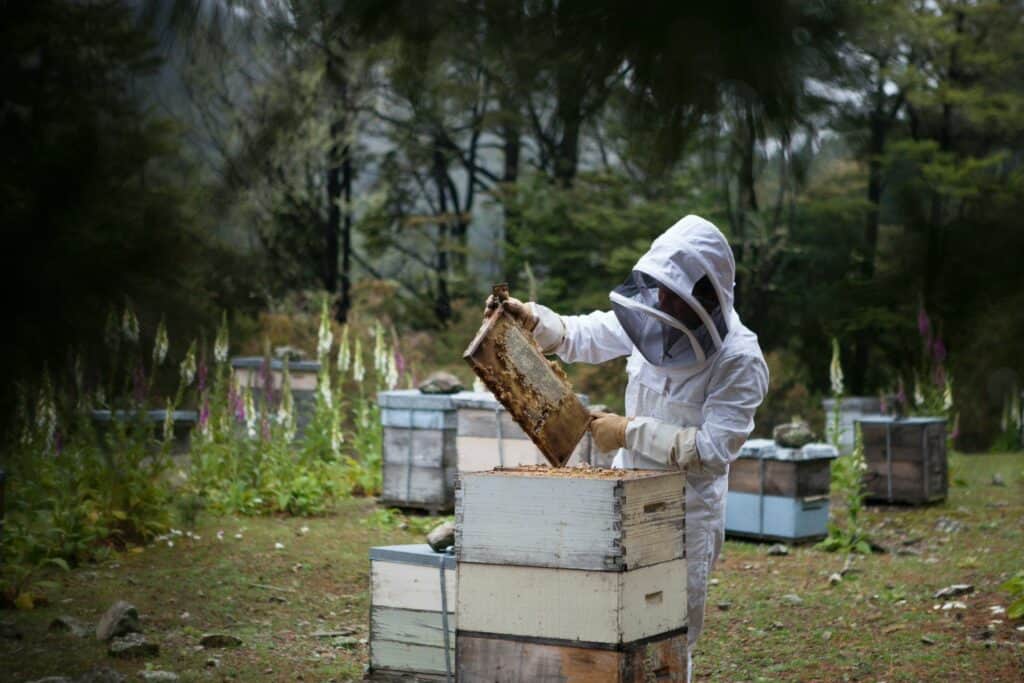From the beehive to the jar – acacia honey
Acacia honey is appreciated for its delicate flavour and crystal-clear appearance, which make it a popular choice for use in baking and cooking. Additionally, it is prized for its unique health benefits, including its low sugar content, high antioxidant concentration, and antimicrobial properties. Whether you enjoy it on your morning toast or stir it into your tea, acacia honey is a delicious and nutritious addition to any diet.
But how does the magic of putting a jar of deliciousness happen?

Collecting the honey
The journey of acacia honey begins with the bees. Acacia trees produce a type of nectar that is especially attractive to bees, and during the blooming season, bees will flock to the trees to collect the nectar. As the bees collect the nectar, they mix it with enzymes in their bodies, which helps to break down the complex sugars in the nectar into simpler sugars. This process also gives honey its distinctive flavour.

The Hive
Once the bees have collected enough nectar, they return to the hive and deposit it in the honeycomb. Here, the bees fan their wings to help evaporate some of the water from the nectar, which helps to thicken and preserve the honey. When the honey has reached the right consistency, the bees will cap the honeycomb cells with beeswax to seal in the honey and protect it from contamination.
The Beekeeper
When the honey is ready to be harvested, the beekeeper will use a tool called a hive tool to gently pry the honeycomb cells from the hive. The honeycomb is then placed in a spinning centrifuge, which separates the honey from the beeswax. The honey is collected in a container, while the beeswax is saved and used to make a variety of products, including candles and cosmetics.
The honey is then filtered to remove any bits of beeswax or other debris that may have been mixed in.

Bottling
The filtered honey is then poured into jars or bottles, where it is sealed and labelled for sale. Some honey is also pasteurized, which involves heating the honey to a high temperature to kill any remaining bacteria or enzymes. Pasteurization can help extend the shelf life of the honey, but it may also alter the taste and some of the beneficial properties of the honey.
Honey processing or bottling is an important part of the beekeeping industry and is a process by which honey is extracted from the hive and then bottled or processed for sale. There are a number of steps involved in honey processing or bottling, and it is important to be familiar with these steps in order to produce a high-quality product.

There are a number of steps involved in honey processing or bottling, and it is important to be familiar with these steps in order to produce a high-quality product.
The first step in honey processing or bottling is to remove the honey from the hive. This is typically done with a honey extractor, which is a machine that spins the honey out of the comb. Once the honey is extracted, it is collected in a container and then strained to remove any impurities.
The next step is to bottle or process the honey. This involves heating the honey to a specific temperature in order to kill any bacteria or other contaminants. The honey is then poured into bottles or jars and sealed.
Now that you know the process of making honey, why not buy a delicious jar from our shop page? https://honeybeeandco.uk/acacia-honey/

